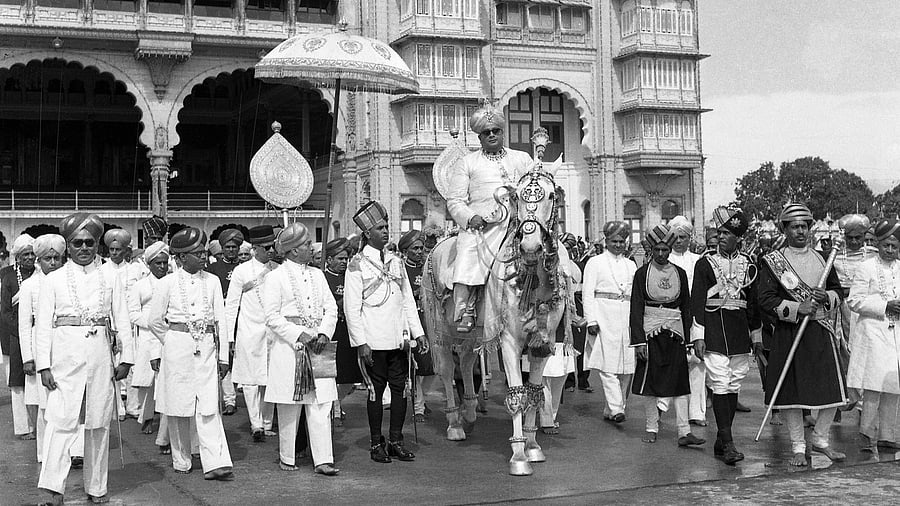
Inscriptions belonging to different ruling dynasties in ancient Karnataka help us reconstruct the history of Dasara. Similarly, many literary works throw light on Dasara, be it the works of Kannada writers or the writings of foreign visitors who participated in the celebrations.
While earlier rulers were celebrating Dasara, it was the kings of the Vijayanagara empire who gave a definite shape to the festival.
Travellers and traders like Niccolo de Conti, Abd-al-Razzaq and Fernao Nuniz, in their writings, have provided us with details about the festival. Particularly the writings of Domingo Paez, a traveller from Portugal who visited Vijayanagar during Krishnadevaraya's rule, are interesting.
Paez, who was mesmerised after witnessing the festival, says, “I have no words to express what I saw, with my head, so often turned from one side to another that I was almost following backwards off my horse with my senses lost.” He was referring to the grand march of the army, which carried royal insignia and an emblem, held on the Vijayadashami day. The march was also an occasion to showcase the power and might of the dynasty.
The Wadiyar dynasty
After the gradual decline of the Vijayanagara empire, other dynasties rose to political prominence. One among them was the Wadiyar dynasty, which held political control over a small geo-political region.
Raja Wadiyar (1578-1617), who turned himself into an independent sovereign from a vassal chief, revived Dasara to a level that matched the pomp and glory of Vijayanagara. It was during his rule that Dasara came to occupy an important place as a ‘state festival’.
In 1610, it was celebrated at Srirangapatna, the capital city, with much pomp, glory and fanfare.
Kantirava Narasaraja Wadiyar, another king of this lineage, was known for his emphasis on the Dasara traditions. Govinda Vaidya, his celebrated court poet, composed ‘Kantirava Narasaraja Vijaya’ in 1648. This work is unique in its style and provides us with more information on Dasara. This work is considered as the earliest composition on ‘Navaratri’. It talks about the artists and labourers who were commissioned to beautify the city prior to the celebrations. According to the poet, Srirangapatna during this time was swarmed with visitors, travellers, chieftains, nayakas and a host of others, who had come to witness the festival.
During the time of Chikkadevaraja Wadiyar, Dasara’s rich traditions came to be revived. These included Nagari, Naubath and Nishan - the military insignias to be carried by the army. This tradition still features in the Dasara procession.
With the death of Chikkadevaraja Wadiyar, the Mysore kingdom was plunged into a period of political confusion. During the 18th century, with the rise of Hyder Ali and Tipu Sultan, Dasara lost its royal patronage.
After the installation of Krishnaraja Wadiyar III on the throne in 1799, Dasara came to occupy centre stage.
This progressed when Chamaraja Wadiyar X took over the administration in 1881. The Maharaja conceptualised new avenues of Dasara. It became more oriental with a European touch and style. Special trains chugged between Bangalore and Mysore carrying guests, particularly Europeans.
During the time of Krishnaraja Wadiyar IV, grand durbars came to coincide with Dasara, during which awards and royal recognitions were bestowed upon achievers. Wrestling was an added attraction.
It was during the time of his successor Jayachamaraja Wadiyar, that Dasara reached its pinnacle, attracting people across the globe. Dasara is now celebrated as ‘Nada Habba’ or ‘state festival’ in a more diversified manner.
